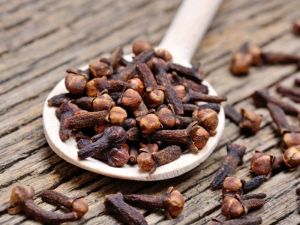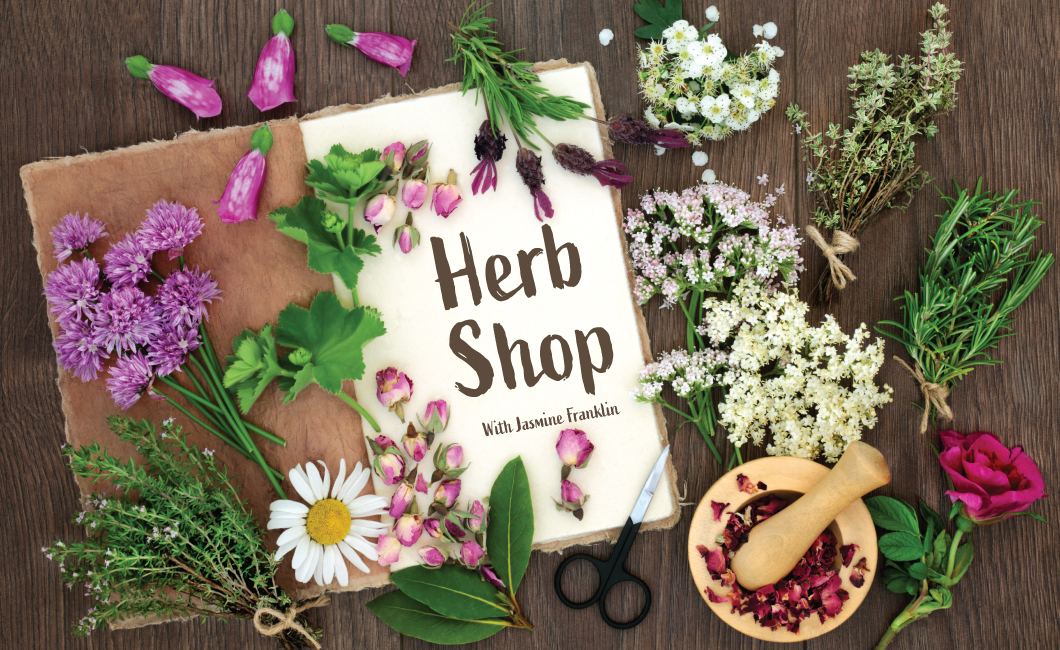- Anti-inflammatory and antibacterial
- Aids in treating colds
- Boosts immune system function
- Treats oral diseases
- Promotes digestion
- Acne buster
- Toothache remedy
- Altitude sickness relief
- 2 tablespoons cloves
- 200 ml olive oil/coconut oil
- Grind the cloves into a fine powder.
- Topple this powder on a cheesecloth and tie it at the top to make a small bundle.
- Pour an oil of your choice (eg. olive oil) in an airtight jar, dip the cheesecloth bundle in it, and seal the jar.
- You can either heat the jar on low heat for an hour or keep it out in the sun for a day.
- Remove the bundle and pour the clove infused oil in a small vial. And voila! Your clove oil is ready to use.
- 2 tablespoons canola oil
- 1 4-inch piece fresh ginger, peeled and coarsely chopped
- 1 head garlic, cloves separated and peeled
- 1 teaspoon black mustard seeds
- Grated zest of 2 limes
- Kosher salt and freshly ground black pepper
- Kosher salt and freshly ground black pepper
- 1 3-pound chicken, butterflied and lightly pounded for even thickness
- 10 cardamom pods
- 5 cinnamon sticks
- 1 tablespoon whole cloves
- 1 medium red onion, halved and thinly sliced
- 3 tablespoons finely chopped fresh flat-leaf parsley leaves
- 1/2 teaspoon sumac
- Heat the oil in a medium sauté pan over medium heat. Add the ginger and garlic; cook until soft, about 2 minutes. Add the mustard seeds; cook 30 seconds. Add 1/2 cup water and the lime zest and season with salt and pepper. Bring to a boil and cook 1 minute. Transfer the mixture to a blender; blend to a smooth paste, adding more water if needed. Let cool.
- Rub the ginger paste over the entire chicken, including underneath the skin. Cover the chicken and marinate in the refrigerator, at least 2 hours and up to 8 hours. Remove the chicken from the refrigerator about 30 minutes before cooking.
- Combine the cardamom, cinnamon and cloves in a bowl. Cover with cold water and soak at least 1 hour and up to 4 hours.
- Combine the red onion and 1 tablespoon salt in a bowl and let sit at room temperature 30 minutes. Rinse with cold water and drain well. Put the onion in a bowl and add the parsley and sumac.
- Heat your grill to high for indirect grilling.
- Drain the spices and add them evenly over the hot coals in a charcoal grill or to the smoker box of a gas grill. Put the lid on the grill and allow smoke to fill the grill, about 10 minutes.
- Season the chicken on both sides with salt and pepper. Put the chicken, skin-side down, on the cooler side of the grill (indirect heat), close the cover and grill until the skin is lightly golden brown with faint grill marks, 22 to 25 minutes. Turn the chicken skin-side up, move to the hotter side of the grill (direct heat) and continue grilling until the skin is golden brown, 15 to 20 minutes. Flip the chicken once more and continue grilling over direct heat until the skin is golden brown and crisp and an instant-read thermometer inserted into the thigh registers 165 degrees F, about 8 minutes.
- Remove the chicken to a cutting board, tent loosely with foil and let rest about 10 minutes before carving. Top the chicken with some of the onion-parsley relish.
Written by Jasmine Franklin on May 1, 2019.
Plants have always been a part of my life. My parents believed in the holistic elements to certain plants and was always quick to look there first. They always worked hard to create something to pass on to us, which is why I decided to start the Herb Shop! I want to share where I'm from, where a lot of our medicinal fixes originated from, as well as, shine a light on the multifaceted uses of common plant life that we look past every day.

Syzygium aromaticum I.e. Clove
Cloves are the dried flower buds of the Syzygium aromaticum tree, an evergreen that grows up to about 30 feet. Its name originates from the Latin word "clavus," which means "nail," because of the shaft and head that it closely resembles. Syzygium aromaticum trees usually grow in warm and humid climates, typically in Indonesia, Sri Lanka and Brazil. In the current trade of cloves, Tanzania leads the market, producing about 80 percent of the world's clove supply.
Like other spices, the story of how cloves were distributed throughout the world spans over hundreds of years, starting with the establishment of the trade routes. Together with pepper, cinnamon and hazelnut, cloves were among the spices that were highly sought-after in both Europe and the Americas, especially by noblemen. These four spices were known to be the "Big Four" because of their rarity and value.
Health Benefits
In addition to their sweet, aromatic flavor, cloves are known for their potent medicinal properties. Cloves are low in calories and provide some fiber, manganese, vitamin K and vitamin C. One test-tube study found that clove extract helped stop the growth of tumors and promoted cell death in cancer cells. Another test-tube study had similar results, showing that concentrated amounts of clove oil caused cell death in 80% of esophageal cancer cells. The eugenol found in cloves has also been shown to have anti-cancer properties. However, keep in mind that these test-tube studies used very concentrated amounts of clove extract, clove oil and eugenol. Eugenol is toxic in high amounts and overdosing on clove oil may cause liver damage, especially in children. Further research is needed to determine how lower amounts may affect humans.
Here is a brief list of some health benefits observed with the use of clove:
WARNING: The use of clove in infants needs to be measured carefully as excessive use may lead to seizures. Due to the strong chemical composition, prolonged use of clove oil on gums is believed to weaken the mucus membrane and the gums. Heavy doses are ill advised for pregnant women and breastfeeding mothers as it may lead to inflammation.
Other Uses
One of the best things about clove oil is that it aids in reducing acne. Many of the acne-fighting skin creams and lotions contain harsh chemicals that may work, but have various side effects. Clove is quite effective for curing acne as it contains a compound eugenol that has antibacterial properties. It can clear cystic acne and kill infections while reducing any swelling. To ensure that the oil you’re using is 100% natural, create your own Natural Clove Oil!
Ingredients Needed:
Steps:
Recipe of the Day
Intensely flavored and fragrant, cloves are often ground and used to lend savory warmth to spiced holiday sweets like pumpkin pie and gingerbread or kept whole for studding a holiday ham. They’re also one of the main ingredient is Worcestershire sauce and some barbecue sauces. The recipe for this month is Smoked Ginger Chicken with Cardamom, Cloves and Cinnamon:
Ingredients Needed (serves 8 – 10):
Steps:
Sources:
https://articles.mercola.com/herbs-spices/cloves.asp
https://draxe.com/clove-oil-uses-benefits/
https://www.healthline.com/nutrition/benefits-of-cloves#section5



